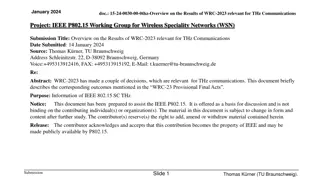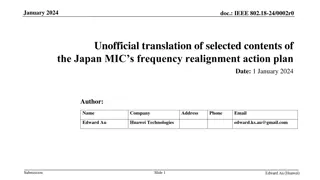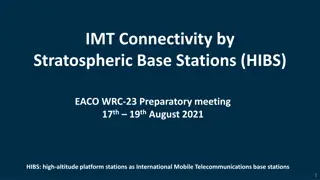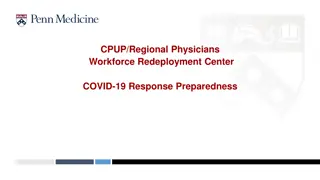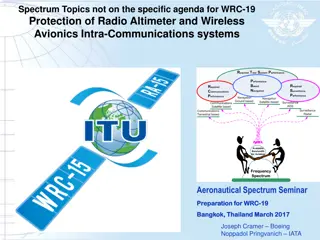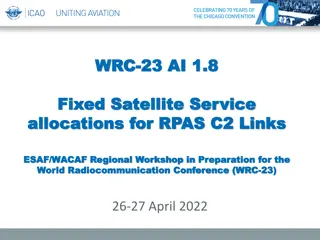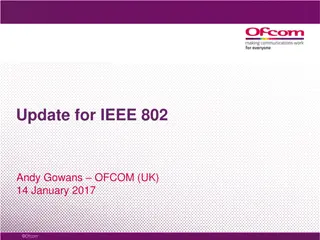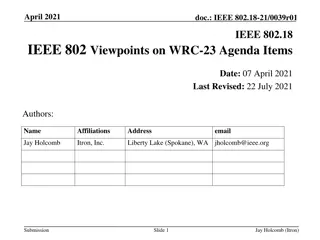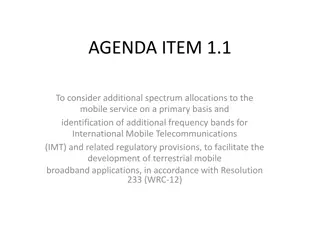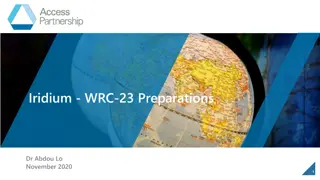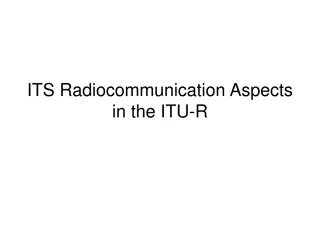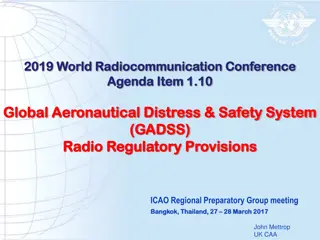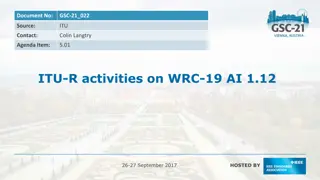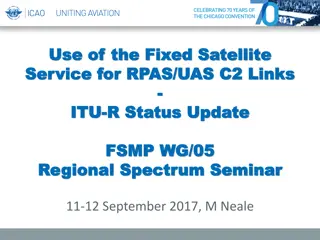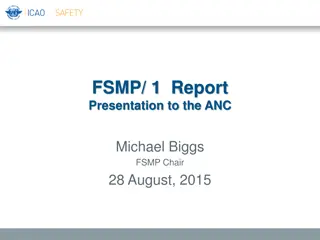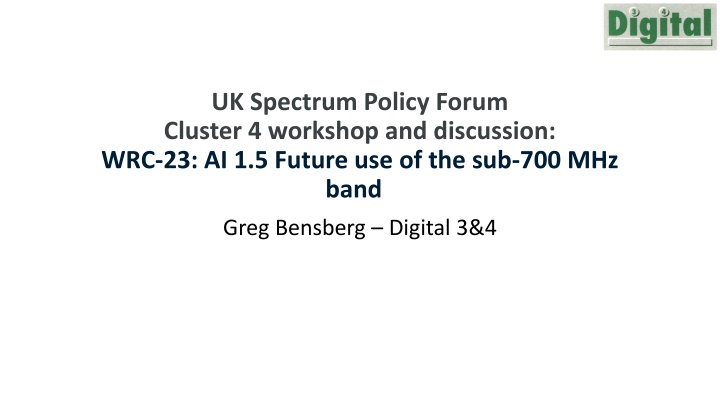
Importance of DTT in UK Broadcasting Landscape
Explore the critical role of Digital Terrestrial Television (DTT) in the UK, highlighting its significance in providing public service content, reaching vulnerable groups, and maintaining its position as the primary distribution platform for quality television. Learn about the current usage and future prospects of the UHF band, emphasizing the impact on viewers and the media market. Discover why DTT remains essential for UK viewers and the government's commitment to its long-term sustainability.
Download Presentation

Please find below an Image/Link to download the presentation.
The content on the website is provided AS IS for your information and personal use only. It may not be sold, licensed, or shared on other websites without obtaining consent from the author. If you encounter any issues during the download, it is possible that the publisher has removed the file from their server.
You are allowed to download the files provided on this website for personal or commercial use, subject to the condition that they are used lawfully. All files are the property of their respective owners.
The content on the website is provided AS IS for your information and personal use only. It may not be sold, licensed, or shared on other websites without obtaining consent from the author.
E N D
Presentation Transcript
UK Spectrum Policy Forum Cluster 4 workshop and discussion: WRC-23: AI 1.5 Future use of the sub-700 MHz band Greg Bensberg Digital 3&4
Current usage of the UHF band Following two clearance programmes the digital terrestrial broadcasters now operate six national and one local multiplex in the band 470 694MHz It is not possible to release any more of the UHF band without reducing the number of multiplexes and hence the range of content available to UK viewers Diagram from Aetha White Paper - The defragmentation dividend, Nov 2017
Status of DTT broadcasting in the UK The British audio-visual sector is a global success story driven by a long heritage of public service broadcasting providing access to high quality content on a free-to-air basis for all. The UK s track record in developing and delivering broadcasting policy with clear socio-economic benefits has been critical to cementing the country s position as a global leader in television. DTT is the primary distribution vehicle for UK public service content. The platform plays a significant role in the delivery of public service content to the nation and will continue to do so for some time to come. The Government has made a long-term commitment to the platform as set out in the White Paper Up Next and demonstrated by the enabling of the renewal of DTT licences to 2034. DTT services are broadcast from over 1,200 transmitter sites around the UK meaning that over 98.5% of UK households have access to free to air public service content through their domestic aerial
DTT market position in UK media market DTT is the most popular way for UK viewers to watch television The importance of Digital Terrestrial Television and Broadcast Radio - Ipsos on behalf of Arqiva 2022
Importance of DTT to UK viewers The majority UK viewers consider access to continued DTT services as important The importance of Digital Terrestrial Television and Broadcast Radio - Ipsos on behalf of Arqiva 2022
Vulnerable groups rely on DTT DTT has a wide reach across UK society including more vulnerable citizens The importance of Digital Terrestrial Television and Broadcast Radio - Ipsos on behalf of Arqiva 2022
DTT continues to innovate UK first country in the world to adopt DVB-T in 1998 and DVB-T2 in 2010 UK broadcasters launched Freeview Play in 2014 which combines access to broadcast services with integrated on line content using HbbTV standard European broadcasters (including the BBC) have developed LTE-based 5G terrestrial broadcast standard for use in mobile devices to provide access to linear content: Standalone downlink Compatible with DTT use sub-700 MHz All can be done under current regulatory framework UK broadcasters believes that 'No Change' at WRC-23 maximizes public value and innovation in the UHF band
4. PMSE It is not just the delivery of TV that would be affected by a move to co-primary. Venues and productions across the UK also depend on the same band of radio spectrum and include TV, film, sport, theatre, churches, schools, live music, newsgathering, political and corporate events, and many others. The UK s Programme Making and Special Events (PMSE) sector is completely reliant on low frequency (UHF) spectrum, which it successfully shares with digital terrestrial television. If it were to lose access to this last band of available spectrum, there would be nowhere else for it to go. These services cannot be delivered over the internet or mobile systems.
Conclusion Terrestrial TV plays a critical role for the UK s provision of public service broadcasting and will continue to do so. Talk of its demise or diminution is premature. A decision to adopt a co-primary allocation in Europe could force the UK to move to switch off DTT even if it may not wish to. A co-primary decision at WRC-23 will damage consumer choice and leave the UK exposed over its provision of universal and free access to public service broadcasting. Moving to a co-primary allocation would also pose a significant threat to the UK s entertainment and live events industry ho make extensive use of the UHF band for PMSE services. There is insufficient evidence to support the case for allocating DTT spectrum for mobile broadband.


